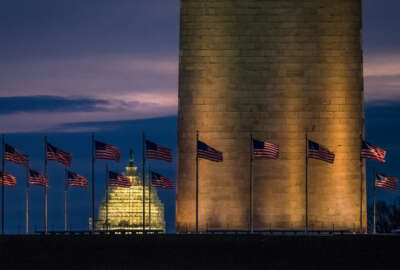
NPS ensures no one left out at national parks
NPS is working to build accessibility into the culture despite the unique challenges posed by the nature of the agency’s mission.
When people think about national parks, “handicap accessible” is probably not one of the first things they think. But the National Park Service wants to change that.
“In working with the disability community for as many years as I’ve worked with them, many don’t see themselves in the national parks because when they picture the national parks, it’s trails, it’s mountains, it’s buildings that are difficult to get into,” said Jacob Buzzell, chief of the National Accessibility branch at NPS, on week three of Agency of the Month, featuring the National Park Service for the month of August. “And we really want to figure out how to demystify that.”
In August 2014, NPS released a five-year strategic plan to improve accessibility at its facilities. This report was the result of 18 months of work by various stakeholders around the agency.
That report had three goals:
- Figure out how to make a welcoming environment for people with disabilities.
- Make sure accessibility is built in when starting new projects, not added retroactively.
- Upgrade existing programs.
Now, two years later, NPS is working to build accessibility into the culture despite the unique challenges posed by the nature of the agency’s mission.
“The National Parks present a distinct challenge when it comes to accessibility because … many of our parks are preserving natural wonders, many of our national parks are preserving history,” Buzzell said. “So we don’t necessarily have the ability to say ‘pave that trail over here’ or ‘make a hole in the side of that building over there and put in an elevator.’ That sometimes is not an option if we want to preserve the history or the natural wonders that people are coming there to see in the first place.”
But physical disabilities aren’t the only kind, Buzzell said. Accessibility is more than just wheelchair ramps and elevators. Disabilities can affect sight, hearing or learning as easily as mobility.
Not only that, but people with disabilities frequently travel with companions, such as parents or children. NPS doesn’t want to them to have separate experiences. Instead, it’s trying to create what Buzzell referred to as a seamless environment.
“What we want to think about is not only can somebody get into the building,” he said. “But once they’ve gotten into the building, or into the trail or whatever feature we have there, can they access what’s going on in there, whether or not it is exhibits, tours, a video. What can we do to create an ‘entry to exit’ experience?”
So NPS considers everything through the lenses of as many different disabilities as possible. Do videos include captioning for the deaf or hard of hearing visitors? Do videos and exhibits include audio description for blind visitors? Is online information compatible with technology designed for people with disabilities?
Will the upcoming presidential transition impact your decision to retire? Take our online survey.
That last one is important, because one thing NPS is trying to do is provide accessible information to everybody up front, so they can make informed decisions and plan their trips accordingly.
“Who are we to judge what people are capable of?” Buzzell asked. “It’s about giving them the information they need to make the decision about what’s right for them.”
Sometimes that requires providing specific information, such as the length, surface and steepness of the grade of a trail.
“If I go to a trail, and we do a good job, our trail-head sign will tell you the information you need to have to make a decision about whether or not you are able to use that trail,” Buzzell said. “It’s not up to me to tell you whether or not this is an easy or difficult trail.”
Because of the uniqueness of each park and the different experiences each one provides, Buzzell said NPS can’t just issue sweeping proclamations. So instead, it’s working on creating a system of best-practices for its many components, that each park can adapt and adopt within its own context.
“What we’re hoping to do is make it so that the next park doesn’t have to reinvent the wheel,” Buzzell said. “They’ve got something to look at — they’ve got some processes and procedures, and good examples of how they can transform what they’re doing based on the work that was done at other parks funded through this initiative.”
This is especially helpful with new projects, Buzzell said, because when accessibility is a consideration from the very beginning, the parks’ approaches to the projects are different.
For example, if an NPS employee is making a movie, they’ll record the audio differently, in order to leave spaces for audio descriptions. They’ll film it differently, in order to ensure that captioning doesn’t cover up important information.
That can actually save NPS money in the long run, because every time it has to go back and update a project to make it accessible, that’s another cost that could have been avoided if accessibility was simply built in.
“What we would really like is people at the planning phase of a project to be thinking about ‘what will we do to make this accessible?’” Buzzell said.
Copyright © 2025 Federal News Network. All rights reserved. This website is not intended for users located within the European Economic Area.
Daisy Thornton is Federal News Network’s digital managing editor. In addition to her editing responsibilities, she covers federal management, workforce and technology issues. She is also the commentary editor; email her your letters to the editor and pitches for contributed bylines.
Follow @dthorntonWFED




